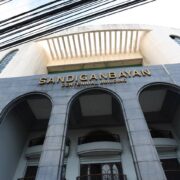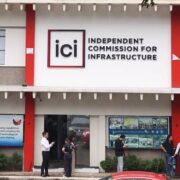Promoting the next property sweet spot

(Conclusion)
Last week, I discussed the major business hubs in Luzon. Outside Metro Manila, local and foreign firms as well as investors are on the lookout for bustling hubs ripe for more investments.
This second part looks at thriving localities in Visayas and Mindanao excluding Cebu, which already cemented its position as the biggest condominium market and one of the busiest property hubs outside the metro.

Capturing opportunities north of Mindanao
In our view, improvements in infrastructure should result in more property developments in Cagayan de Oro (CDO).
One example is the expansion and modernization of the Laguindingan Airport, which is being developed as another international gateway. Upon completion of the first phase, its capacity will increase to 6.1 million passengers annually, up from the current 1.6 million.
Other vital projects include the 31.7-km Panguil Bay Bridge, the longest sea-crossing bridge in Mindanao, and the second phase of the Cagayan de Oro Coastal Road.
CDO’s property market meanwhile continues to evolve due primarily to residents’ purchasing power and influx of national players.
Average take-up of condominium projects in CDO is 88 percent, with an average price of P131,000 per sqm. For CDO’s house-and-lot (H&L) segment, the average take-up is at 89 percent with an average price of P3.3 million per unit. Meanwhile, lot-only units in CDO are about 92 percent sold, priced at an average of P9,700 per sqm.
Storing property value in Davao
In Mindanao, Davao remains the most attractive property investment destination. Its competitiveness and stature as an outsourcing hub, backed by steady regional economic growth, should retain the city’s attractiveness for more residential projects.
The national government has lined up vital infrastructure projects in the city which, once completed, should further solidify the city’s attractiveness as a residential investment hub in Mindanao. These include the 17.8-km Davao City Coastal Road, which will serve as a bypass and coastal protection, and the 45.5-km Davao City Bypass.
Currently, average take-up of condominium projects in Davao is at 91 percent, with an average price of P128,000 per sqm. For Davao’s H&L segment, the average take-up is at 91 percent with an average price of P4.1 million per unit. Meanwhile, lot-only units in Davao are about 88 percent sold, priced at an average of P18,800 per sqm.

Bacolod and Iloilo: A tale of two burgeoning cities
Western Visayas, comprised of Iloilo, Aklan, Capiz, Antique, and Guimaras, is one bustling region for property development.
Aside from being a major tourist destination, the region boasts of skilled manpower, reputable colleges and universities, and massive townships ideal to house major investors including big outsourcing companies.
The growth of Western Visayas and its neighboring region, Negros Island Region (NIR), should partly hinge on the implementation of public projects like the Panay-Guimaras-Negros Inter-Island Link Bridge.
Bacolod City, meanwhile, is attracting national players and we see this resulting in the development of more township developments and a further expansion of the city’s residential stock.
Average take-up of condominium projects in Bacolod is 88 percent, with an average price of P132,000 per sqm. For Bacolod’s H&L segment, the average take-up is at 91 percent with an average price of P2.6 million per unit. Meanwhile, lot-only units in Bacolod are about 86 percent sold, priced at an average of P9,600 per sqm.
While residential condominium developments are concentrated in Mandurriao, Iloilo’s main business district, some developers are beginning to explore other districts in the city ripe for upscale and luxury residential developments.
Average take-up of condominium projects in Iloilo is 89 percent, with an average price of P141,000 per sqm. For Iloilo’s H&L segment, the average take-up is 93 percent with an average price of P2.7 million per unit. Meanwhile, lot-only units in Iloilo are about 84 percent sold, priced at an average of P10,000 per sqm.
Prior to joining Colliers in March 2016, Joey worked as a Research Manager for a research and consutancy firm where he handled business, political, and macroeconomic analysis. He took part in a number of consultancy projects with multilateral agencies and provided research support and policy recommendations to key government officials and top executives of MNCs in the Philippines.

















